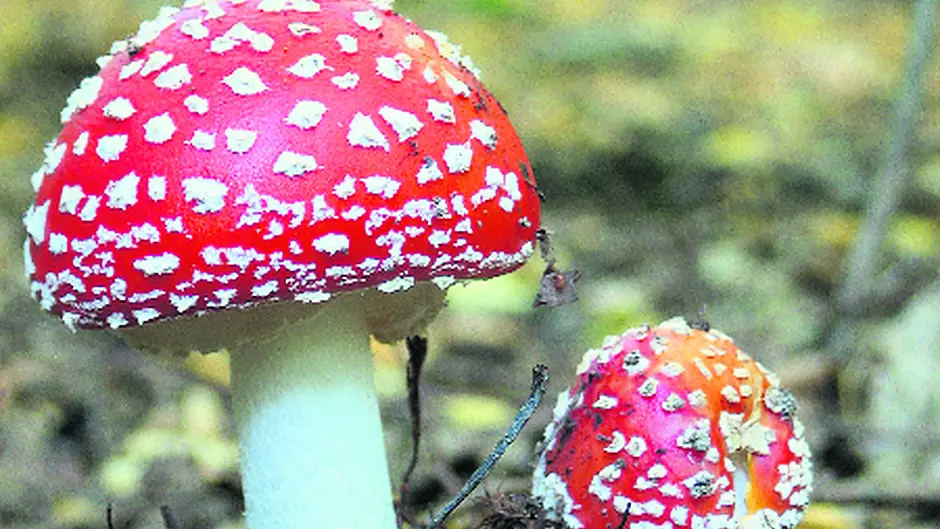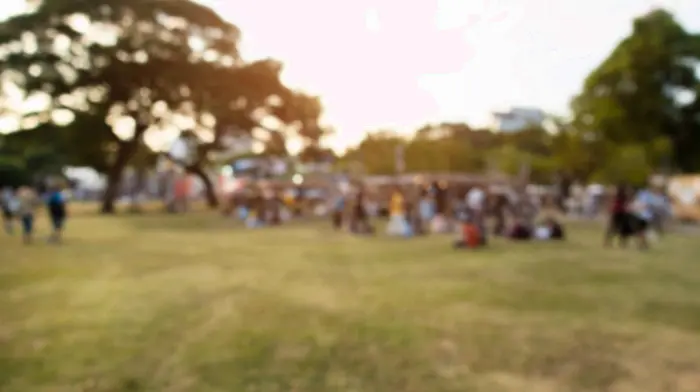I’m finding it a bit difficult to get to my clothes line these days. The field of grass (it cannot be called a lawn) in my garden has erupted over the last week. Hundreds of shaggy ink cap mushrooms are dotted around the clothes line in various states of development.
I’m finding it a bit difficult to get to my clothes line these days. The field of grass (it cannot be called a lawn) in my garden has erupted over the last week. Hundreds of shaggy ink cap mushrooms are dotted around the clothes line in various states of development. It’s been fascinating to watch them appear and they’ve drawn my attention to some other, less flamboyant, fungi too.
Hidden Hyphae
The term ‘fungus’ is usually used to describe a mushroom or toadstool, but this is only a part of the story of these extraordinary organisms. What you see is only a small portion of what is actually present. The above-ground fungus is the fruiting body of the organism, containing spores that are eventually shed and spread far and wide by the wind.
Beneath this ‘fruit’, and usually not visible to the naked eye, is an enormous network of white threads – called hyphae – which makes up the main body and feeding organism of the fungus. This ‘hidden’ part of the fungus continues to feed and grow even when the part visible overground is not present.
Unlike green plants, fungi cannot photosynthesize to gain energy from sunlight as they lack chlorophyll. So they cannot make their own food. Instead, they feed on the tissues of living, dead or decaying plants and animals. Their hyphae spread through the food source to break it down and feed on the nutrients. Many feed on decaying organic matter, some are parasitic while others live in a benign partnership with their living hosts.
Trees and Fungi
Woodlands are terrific places for fungi spotting, especially around this time of the year. Fruiting bodies of many sizes, shapes and colours sprout up for short periods and some of them are extraordinarily alien looking.
Most of the fungi growing on forest floors obtain their food from living trees. For some of them, the relationship is symbiotic. This means that both organisms receive some mutual benefit from their relationship. However, some are parasitic – they cause damage to the tree and slowly drain the life out of their host.
Fungi infect wood in different ways. Often wind-blown spores land on standing trees and start to grow when conditions become damp. They start to send out their tiny threads of hyphae which form a fine cobweb-like net (a mycelium) that penetrates the wood.
Fungi also grow the tiny strands of hyphae through the soil to colonise the roots of nearby trees. The fungus covers the root and the hyphae penetrate between the root cells, getting into the tree.
Both the tree and fungus benefit from this connection in the roots. The fungus can absorb nourishment in the form of sugars from the tree. The tree relies on the fungus to absorb water and minerals from the soil. Normally its root hairs would do this but they are taken over by the fungus. However, because the fungus grows into the surrounding soil, it is much more efficient in that it collects from a much larger volume of soil than the tree could ever get to on its own.
These symbiotic relationships are formed with many types of woody plants, including the beech, birch and pine families. Some fungi are non-specific, meaning that they can be found in association with several different species of tree. Others confine themselves to a particular genus of trees.
Some fungi live off the food stored in the tree in its sap wood. These often grow from spores that develop to gain access to the tissues of the wood and grow down into the sap and water channels. Others cause a condition called heart rot by actually absorbing the wood itself.
Some fungi – called saprophytes – live off decaying plant remains rather than living organisms. These play a vital role in nature’s waste disposal system. Each year over a ton of leaves, twigs and branches fall to the ground in a single acre of woodland floor. The saprophytes help to break down and recycle this waste material.
Fungi at Lough Hyne
Fungi come in different shapes and sizes. Bracket fungi are the flat, plate-like ‘brackets’ sometimes found clamped tightly to tree trunks. They look like flying saucers that have been half-absorbed into the tree and they are parasitic.
Over the years, I’ve watched a hardy species of bracket fungus – the common ganoderma – slowly draining the life out of a beech tree at Lough Hyne. It can be seen year-round clamped tightly to the trunk of a beech tree on the ‘low road’ towards Barlogue. Its broad semi-circular shelves have an extremely hard, rusty brown cap and an undersurface covered in tiny pores. These rain down billions of spores in summer. It grows a new layer of pores each year so – like dating trees by their rings – you can tell its age by its layers. Each year, this fungus is spreading itself around its graceful beech host tree, slowing killing it as it does so.
The fly agaric is another interesting fungus that is commonly seen in autumn near the beech trees at Lough Hyne. This does not damage its beech host as it forms a mutually beneficial relationship exchanging nutrients via the tree roots.
Red with white spots, this distinctive mushroom is a firm favourite with the illustrators of fairy tales.
While it’s very pretty it’s also poisonous, but not dangerously so unless consumed in large quantities. It gets its name from its former household use in killing flies. Its caps were mashed, mixed with milk and sugar and the mixture laid out as a bait to attract and kill flies.
It is also said that a northern European tribe, the Sami, used the fly agaric as an hallucinogenic. By drinking the urine of reindeer that had eaten it, they were able to consume a non-lethal dose and thus enjoy its psychedelic side-effects.
The fly agaric is just one of many poisonous fungi that exist. The death cap is the most poisonous fungus in the world. Even a quarter of a death cap can be fatal. It is said that it was used to poison the infamous Roman Emperor Claudius. Together with its close relatives, the destroying angel and the fool’s mushroom, the death cap accounts for over 90% of all fatal fungi poisonings.
The shaggy ink cap mushrooms in my field have been wonderful to watch. They emerge out of the ground as bumps, grow to a cone and then open to the cap and stem shape. The caps sway gently in the breeze, releasing their spores into the wind. Once the spores are gone, the gill tissue breaks down into an inky liquid which drips away.
While my fungi books tell me that the crop of shaggy ink cap in my garden are edible when young, I’m reluctant to try eating them. I remember my father being violently ill after a mushroom-picking excursion though thankfully he survived it. In any case, any pleasure that I could possibly derive from eating them has certainly been exceeded by the joy of observing them. And better to be safe than sorry!








